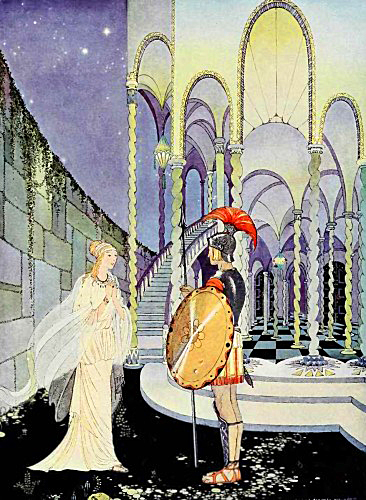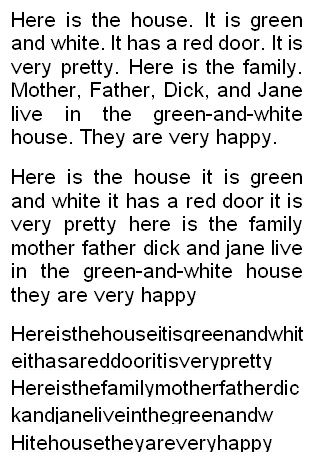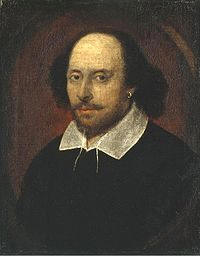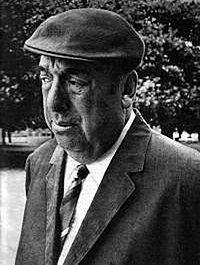EXAMPLES OF
SYMBOLISM:
Rocks – Jean-Paul Sartre used the
symbol of rocks to represent people who fail to act and
define themselves.
Crucifixion –
One Flew Over the Cuckoo's Nest, and Dead Man Walking used
crucifixion to represent suffering and Christianity.
Roses – They represent purity and love because they sprang
from the blood of Adonis who loved Aphrodite. A great
example is
American Beauty.
Lawnmower –
Used in Lawnmower Man, and
Sling Blade. What could a lawnmower
represent?
Weeds – A
great example is Perre
Shelton’s poem
Dandelion. What do dandelions and weeds
represent?
Train - Runaway Train / Harold and Maude – What does a train
or disconnected boxcar represent?
 Collaborate:
Collaborate:
Give
examples of symbolism.
Each group member needs to contribute at least one.
FOUR TYPES OF LITERATURE:
-
Fiction
-
Nonfiction
-
Drama
-
Poetry
FICTION: (nonfactual / imaginative)
Two Types:
-
Realistic
(verisimilitude)
-
Nonrealistic (fantasy)
Two Categories:
-
Novel – A long work with many
characters.
-
Short
Story
NOVEL:
TYPES OF SUBJECT MATTER:
1. Sociological-panoramic: covers many years and settings.
2. Dramatic-intimate: covers a restricted time and setting.
TYPES OF NOVELS:
1. Epistolary – told through letters (The Color Purple)
2. Gothic – medieval mystery and terror (Fiction)
3. Historical – realistic epoch.
4. Manners – Social customs (Pride and Prejudice)
5. Picaresque – adventures of a traveler (Yhomas Nash – The
Unfortunate Traveler)
6. Psychological – emphases is on the characters motives and
inner-world that triggers events. Events also trigger the
inner world. This raises the question: do we have free will,
or are all our actions predetermined. (Leo Tolstoy – War and
Peace)
7. Sentimental – exaggerated emotional focus (Samuel
Richardson – Pamela)
SHORT STORIES:
Usually a single scene with few characters
that are underdeveloped. Fables and folklores are examples.
In a fable the characters are animals, and there is a moral
to the story. (Aesop’s Fables)
NONFICTION: (factual)
TYPES:
1. Biography – about a
person’s life.
2. Hagiogrphy – a biography about a religious person
3. Essay – Nonfiction Informal - brief, conversational, loose structure. Formal –
longer, structured, impersonal subject, less emphasis on
author’s personality.
4. Speech
TECHNICAL DEVICES
Point of View – the perspective from which
the story is told.
Three Types:
1. First Person Singular – told from a character’s point of
view
2. Third Person - has two types:
a. Singular – from a character that isn’t in the story.
b. Omniscient – from all the characters’ perspective or no
characters’ perspective.
TONE:
How something is said changes the meaning.
P O E T R Y
Peter Gabriel - Mercy
Street - Live in Milan 2003
Anne Sexton (1928 - 1974)
video |
45 Mercy Street |
poems |
life
William Shakespeare
SOME TYPES OF
POETRY
LYRIC
A short poem that is sung.
Again
- John Legend (Def Poetry)
HAIKU
A Japanese
poem written in three lines.
Five Syllables
Seven Syllables
Five Syllables
Does this poem have the right
number of syllables per line?
Here is a tip; try clapping.
A still water
pond.
A rock that sits by
the brook.
No ripples, no mind.
):(
John Chiappone
 Collaborate:
Collaborate:
Write a Heiku.
NARRATIVE POEMS
Poems that tell a story.
CONCRETE POEMS
Concrete poems arrange
their words to create a picture of the subject of the poem
(example).
FREE VERSE POETRY – Modern
poetry that is free form like Jazz. It has no ridged
structure, doesn't necessarily rhyme, sounds
conversational, and improvisational.
IMPORTANT CONCEPTS
POET - the author of a poem.
SPEAKER - the “narrator” of a poem.
IMAGERY - Reading can
cause sense perceptions like sights, sounds, tastes, tactile
sensations, and smells.
METAPHOR - A direct
comparison of two unlike things:
Juliet is the
Sun, and I am the moon.
SIMILE - A comparison of two things using
“like, as, or resembles.” For example: Juliet is like the
Sun, and I resemble the moon. She’s like a maze where all
the walls continually change. – Daughters by John Mayer
 Collaborate:
Collaborate:
Metaphor & Simile Writing Exercise
Free write
ONOMATOPOEIA - Words that
imitate the sounds they describe.
Roy
Lichtenstein Whaam
Examples: Buzz , oink, meow, roar,
rip, zip, and zap.
HYPERBOLE - It is a figure of speech in which statements
are exaggerated. Hyperbole is used to create emphasis, but
it is rarely meant to be taken literally.
Examples:
* These books weigh a ton. (The books
are heavy.)
* The path went on forever. (The path was
really long.)
* He jumped a mile. (He jumped
very high.)
* I'm doing a million things right now.
(I'm busy.)
* I'm so hungry I could eat a
horse.
(I'm very hungry)
PERSONIFICATION
- Giving
anthropomorphic (human) qualities to an animal or inanimate
object.
Examples:
"Arise fair sun, and kill the envious moon."
- Romeo and Juliet by William Shakespeare
FORM - the appearance of the words on the page
LINE - a line of the poem
STANZA - a paragraph or group of lines
|
Line: |
As I was sitting in my chair, |
end rhyme |
Stanza |
|
Line: |
I knew the bottom wasn't there, |
|
Line: |
Nor legs nor back, but I just sat, |
end rhyme |
|
Line: |
Ignoring little things like that. |
TYPES OF
STANZA:
Couplet
- 2 lines
Triplet
- 3 lines
Quatrain - 4 lines
Quintet - 5 lines
Sestet
- 6 lines
Septet - 7 lines
Octave - 8 lines
STRUCTURE - Lines with the same: number
of words, syllables, accents, rhyme etc.
SOUND STRUCTURE:
Four Types:
1. Rhyme – words that sound alike.
2. Alliteration – repeating an
initial sound: Peter Piper
picked a peck of pickled
peppers.
3. Assonance – uses similar
vowels: In Xanadu did Kubla
Khan - by Coleridge
Mad as a Hatter
4. Consonance – repeated
consonants: Susan’s
Mississippi Sightseeing.
RHYTHM - The
beat of a poem. Meter, rhyme, assonance, consonance,
alliteration, and refrain contribute to a poem’s rhythm.
FOOT – a pattern of stressed (strong) and unstressed (weak)
syllables.
TYPES OF FEET:
Trochaic - stressed, unstressed
Dactylic - stressed, unstressed, unstressed
Iambic -
unstressed, stressed
Anapestic - unstressed, unstressed, stressed
METER - A pattern of stressed and
unstressed syllables on a line.
TYPES OF METER:
Monometer - 1 foot per line
Dimeter - 2 feet
Trimeter
- 3 feet
Tetrameter - 4 feet
Pentameter - 5 feet
Hexameter - 6 feet
Heptameter - 7 feet
Octometer - 8 feet
RHYME - Words
sound alike because they share the same ending vowels and
consonants.
FLOWER
TOWER
END RHYME -
words at the end of lines that rhyme.
Shall I
Compare Thee To A Summer's Day?
by William
Shakespeare (1564-1616)
Sonnet #18
"Shall I compare
thee to a summer's day?
Thou art more lovely
and more temperate:
Rough winds do shake
the darling buds of May,
And summer's lease
hath all too short a date".
- William Shakespeare
INTERNAL
RHYME - Words that rhyme inside a line.
The Raven
by
Edgar Allan Poe (1809 – 1849)
Once upon a midnight dreary,
while I pondered, weak and weary,
Over many a quaint and curious volume of
forgotten lore,
While I nodded, nearly
napping, suddenly there came a
tapping,
As of some one gently rapping,
rapping at my chamber door.
"'Tis some visitor," I muttered, "tapping
at my chamber door -
Only this, and nothing more."
RHYME SCHEME -
a pattern of rhymes:
Robert
Herrick
To Anthea, who may Command him Anything
|
Bid me to weep, and I will
weep |
A |
|
While I have eyes to
see; |
B |
|
And having none, and yet I will
keep |
A |
|
A heart to weep for
thee. |
B |
My Mistress' Eyes are nothing like the Sun.
By William Shakespeare
Sonnet 130
|
My mistress' eyes are nothing like
the sun;
Coral is far more red than her lip's
red;
If snow be white, why then her
breasts are dun,
If hair be wires, black wires grow on
her head.
I have seen roses damasked, red and
white,
But no such roses see I in her
cheeks;
In some perfumes there is more
delight |
a
b
a
b
c
d
c
|
10 syllables
strong, weak, strong |
|
Than the breath with which my
mistress reeks.
I love to hear her speak, yet well I
know,
Music hath a far more pleasing sound;
I grant I never saw a goddess go;
My mistress, when she walks, treads
on the ground.
And yet, by heaven, I think my love
as rare
As any she belied with false compare.
|
d
e
f
e
f
g
g |
|
ASSONANCE
- The repetition
of vowels.
Examples of
Assonance:
- Hear the mellow wedding bells. —
Edgar Allan Poe, "The
Bells"
- That solitude which suits
abstruser musings - Samuel Coleridge
- On a proud round cloud
in a white high
night - E. E. Cummings,
if a Cheer Rules Elephant Angel
Child Should
CONSONANCE - The
repetition of the same consonants. For example:
"all
mammals named
Sam are clammy".
ALLITERATION - Alliteration is a special case of consonance
where the repeated consonant sound is at the beginning of
each word, as in:
Peter
Piper picked a
peck of pickled
peppers.
REFRAIN - A sound, word,
phrase or line repeated regularly. Here are some examples:
Nothing in this world can take the place of
persistence. Talent will not: nothing is more common
than unsuccessful men with talent. Genius will not;
unrewarded genius is almost a proverb. Education will not:
the world is full of educated derelicts. Persistence and
determination alone are omnipotent.
- Calvin Coolidge (the 30th President of the
United States)
Yes, we can. Yes, we can change. Yes, we can. … And where we
are met with cynicism and doubt and fear and those who tell
us that we can't, we will respond with that timeless creed
that sums up the spirit of the American people in three
simple words - yes, we can.
- President Obama’s speech: 'Yes, We Can Change'
POETRY APPRECIATION
Pablo Neruda
Rafael Casal -
Monster (WARNING - This
poem has foul language.)
Def Poetry Jam - Alicia Keys -
P O W
Maya Angelou -
And Still I Rise
St. Crispen by William Shakespeare -
Renaissance Man
SUGGESTED LITERATURE:
-
Fiction
-
Non-Fiction
-
Poetry
-
History
-
Biography
-
Drama
ONLINE BOOKS
-
Tanglewood Tales
- Nathaniel Hawthorne.




 Collaborate:
Collaborate:
